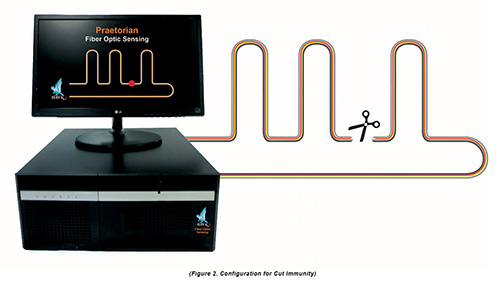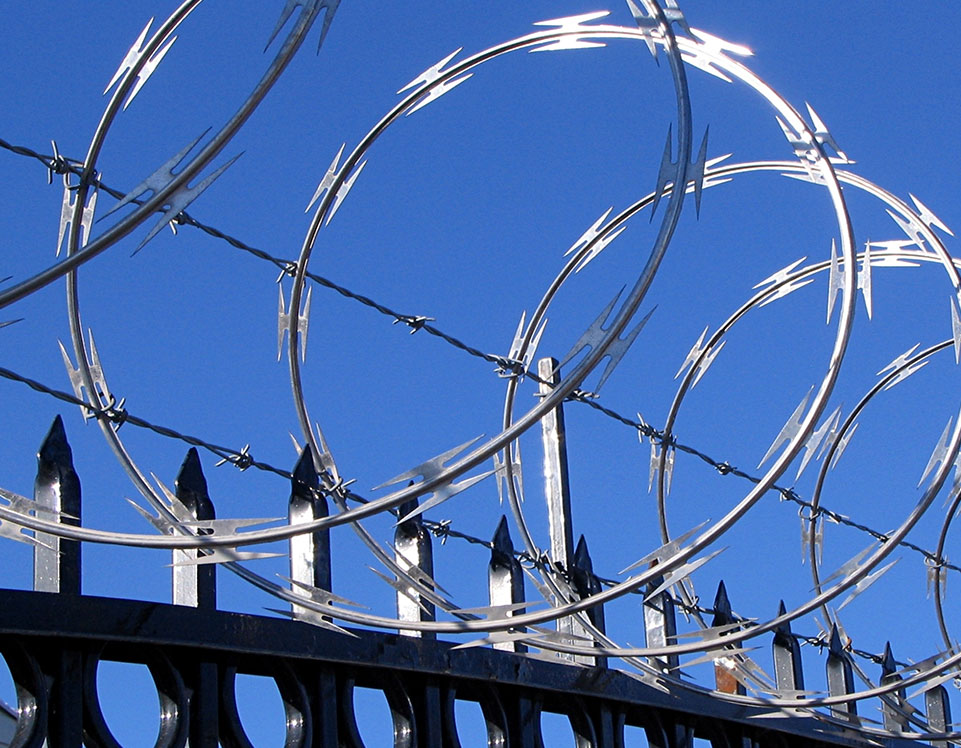Key Aspects of Fiber Optics Infrastructure for Security Installations You Need to Know
Key Aspects of Fiber Optics Infrastructure for Security Installations You Need to Know
Blog Article
Improve Your Security With Advanced Fiber Optic Security Equipments
In a period where safety is paramount, sophisticated fiber optic safety and security systems provide a compelling solution for boosting safety across various settings. These systems not just flaunt premium transmission capacity and rate for high-resolution security but also offer exceptional resilience against outside disturbances. As organizations increasingly seek reputable ways to protect their properties, the combination of cutting-edge technologies like AI and IoT within fiber optic frameworks increases important questions about their efficiency contrasted to standard systems. What effects do these improvements hold for future security steps?
Advantages of Fiber Optic Protection
Using the advantages of fiber optic innovation significantly enhances safety systems across different applications. One of the key advantages is the raised bandwidth ability, enabling the transmission of large quantities of information at high rates. This is particularly essential for real-time video monitoring, where high-resolution feeds can be sent without latency, making sure prompt feedback abilities.
Furthermore, fiber optics exhibit superior resistance to electro-magnetic interference, which is important in atmospheres with possible signal disruptions. This reliability makes certain regular performance in essential safety procedures. Additionally, fiber optic wires are less vulnerable to tapping and unapproved accessibility compared to standard copper wiring, thus boosting information honesty and confidentiality.
One more notable advantage is the longevity of fiber optic systems; they are a lot more resistant to ecological factors such as wetness, temperature variations, and corrosive materials. This strength translates to lower maintenance costs and longer life expectancies for safety setups.
Lastly, the light-weight nature of fiber optic wires promotes simpler setup and directing, especially in complex frameworks (fiber optic security system). Eventually, the assimilation of fiber optic innovation right into security systems not only strengthens security steps yet likewise enhances functional efficiency
Secret Features to Think About
When assessing fiber optic safety and security systems, several key functions need to be considered to make sure optimum performance and efficiency. Assess the system's discovery range and level of sensitivity; a considerable range allows for keeping an eye on huge areas, while high sensitivity ensures that also minor disturbances are identified without delay.
Following, take into consideration the integration capacities of the system. A fiber optic safety system should perfectly user interface with existing safety and security actions such as electronic cameras and alarms, creating a cohesive safety network.
Resilience and environmental resistance are additionally important functions. Guarantee that the system is created to stand up to rough climate condition and possible physical dangers, as this will extend its operational life-span.

Finally, check into the scalability of the system. A durable fiber optic safety system ought to be conveniently expandable to fit future demands without significant overhauls. By meticulously thinking about these functions, you can pick a fiber optic safety and security remedy that improves safety and security and safety in your setting.
Setup Process Summary
To successfully apply a fiber optic protection system, a systematic installment process is important. This procedure starts with an extensive website assessment to identify the details safety needs and to determine ideal places for fiber optic cable televisions and safety and security tools. Following this evaluation, the installation group will develop a thorough strategy, consisting of wire paths, needed tools, and conformity with local laws.
Next, the installation includes laying the fiber optic cable televisions, guaranteeing they are secured from ecological aspects and physical damage. Appropriate handling techniques are vital, as fiber optic cable televisions are delicate and can be conveniently harmed. After the cabling is installed, ports and discontinuations are meticulously finished to make certain signal stability.
The subsequent stage includes mounting safety gadgets such as video cameras, activity detectors, and security system, all integrated with the fiber optic network. Extensive testing is carried out to verify that all elements are functioning correctly and read here to make sure optimal efficiency.

Comparing Fiber Optic to Typical Equipments
The advancement of protection innovation has actually led to considerable improvements in the contrast in between fiber optic systems and typical copper-based systems. Fiber optic systems make use of light to transmit information, supplying superior bandwidth and rate compared to their copper visit the site equivalents. This results in improved information transmission capacities, making optical fiber optimal for high-resolution video security and real-time monitoring.
Furthermore, fiber optic cables are immune to electro-magnetic disturbance, lowering the probability of signal destruction brought on by external aspects. This characteristic guarantees constant performance, also in difficult atmospheres. In contrast, traditional copper systems are extra susceptible to disturbance, leading to prospective vulnerabilities in security applications.
Sturdiness is another advantage of fiber optic systems. They are much less prone to damage from ecological variables such as wetness and temperature level variations, which can endanger copper circuitry. Moreover, fiber optics are lighter and thinner, enabling easier installation and minimized physical footprint.
However, traditional systems tend to have reduced initial costs, making them eye-catching for budget-conscious tasks. While fiber optic systems might call for a greater upfront investment, their lasting advantages-- such as reduced upkeep costs and better dependability-- often exceed the initial expense, placing them as an exceptional selection for modern security requirements.
Future Patterns in Protection Innovation
Emerging fads in safety innovation are poised to change the landscape of monitoring and threat detection - fiber optic security system. As companies increasingly deal with sophisticated threats, technologies such as synthetic intelligence (AI) and artificial intelligence (ML) are coming to be indispensable to security systems. These innovations enhance the capacity of fiber optic systems by making it possible for real-time data evaluation, identifying useful link abnormalities, and automating responses to potential violations
Additionally, the integration of the Internet of Points (IoT) is reinventing safety and security frameworks. IoT tools can offer comprehensive situational recognition and promote seamless communication in between various protection components. This interconnectedness permits extra reliable monitoring and faster occurrence feedback times.
Biometric authentication is additionally acquiring energy, providing a greater degree of safety and security through special physical characteristics. As this technology develops, it is likely to be incorporated into fiber optic systems for improved accessibility control.
Conclusion
In conclusion, advanced fiber optic protection systems represent a considerable innovation in safety and monitoring modern technology. The change from conventional systems to fiber optic solutions reflects a growing pattern in the direction of extra reliable and reliable security measures in a progressively complicated technical landscape.
Report this page